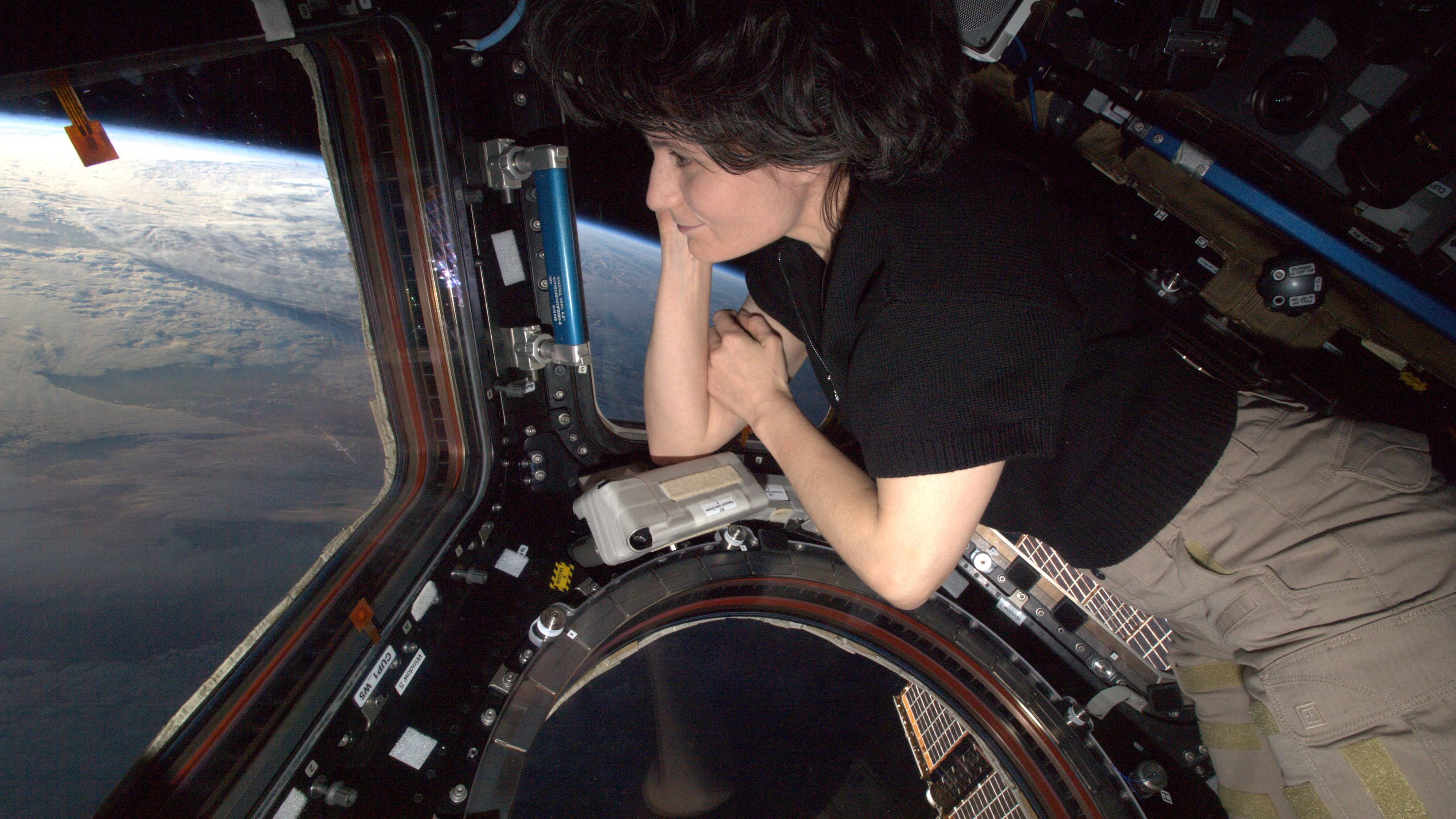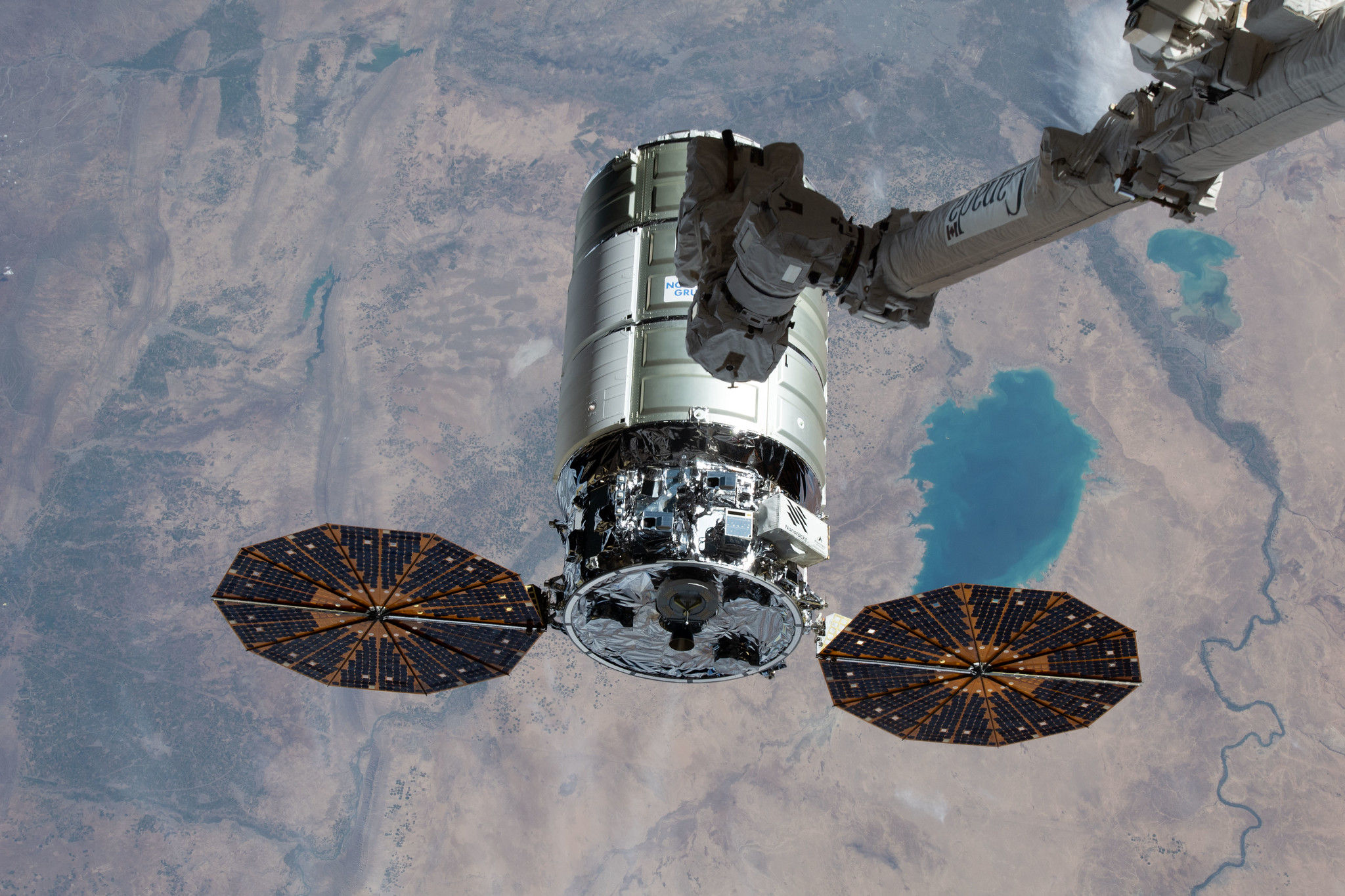Rooms with a view: Astronauts have design ideas for new space stations
"We're trying to take these next leaps into deep space exploration."

Wraparound windows and clever design should be key features in the next generation of space stations, astronauts say.
The SpaceX Crew-4 cohort of four astronauts, who returned to Earth on Oct. 14, have several years of spaceflight experience between them working on the two-decade-old International Space Station (ISS). They told reporters in a press conference Thursday (Oct. 20) that their orbiting home was a great place to be, but the next generation of stations can take the tech even further.
"We're trying to take these next leaps into deep space exploration," said Crew-4 pilot and NASA astronaut Bob Farmer. "I think we need to really start thinking out of the box on a lot of these things. But first and foremost, if we're going to do human exploration, you got to put the 'human' in the equation."
While the ISS is in good health right now, NASA is planning to transition into commercial space stations as soon as 2030 — and has contributed early-stage funding to support the effort. The agency selected Axiom Space in January 2020 to build a commercial module that will be the genesis of a full independent private station, and it expanded the roster of commercial low Earth orbit (LEO) destinations in December 2021 to concepts designed by Nanoracks, Northrop Grumman and Blue Origin, which is partnering with Sierra Space on its project.
Related: NASA looks to private outposts to build on International Space Station's legacy
Farmer said these companies should start to think about what new technologies could be coming into the commercial space stations. The ISS has pioneered its fair share, he said; while he did not point to specifics, a prominent example is recycling water from urine to reduce the need for shipments from Earth.
Farmer urged that, whatever tech the companies tackle, they should have efficiency and sustainability in mind. And then there's the science to consider; Crew-4 mission specialist Jessica Watkins, a geologist specializing in Mars who published a science paper while in space, urged a next-gen design to include a 360-degree cupola window similar to the one the ISS received in 2010 (or for that matter, the one that the Inspiration 4 mission flew on a modified SpaceX Crew Dragon capsule in 2021.)
Get the Space.com Newsletter
Breaking space news, the latest updates on rocket launches, skywatching events and more!
Related: SpaceX shows off Inspiration4's amazing view of Earth and new dome window

The ISS cupola allows astronauts to "look out the window, and see the Earth below us, and make scientific observations," Watkins said, adding that the window also allows "more opportunities for crew members to interact with the environment that they are in, whether that is a view of the Earth, or view of the moon, or even further — onto Mars."
Expedition 68 ISS commander Samantha Cristoforetti, who has two long-duration missions under her belt, urged flexibility in the design as much as is feasible, especially in light of possible other users like space tourists coming on board.
"We're going to transition to commercial space stations and have space fliers who maybe don't fly to space as a professional, but maybe fly to space for their enjoyment," she said. She urged engineers to consider designs "built with the human being in mind," rather than asking humans to adapt to the environment.
Cristoforetti said designers should be brought on board to assess "the usability and the pleasure of using such an object or feature," but added that is something common in spaceflight already. "So I'm pretty sure that will happen naturally."
Follow Elizabeth Howell on Twitter @howellspace. Follow us on Twitter @Spacedotcom or Facebook.
Join our Space Forums to keep talking space on the latest missions, night sky and more! And if you have a news tip, correction or comment, let us know at: community@space.com.

Elizabeth Howell (she/her), Ph.D., was a staff writer in the spaceflight channel between 2022 and 2024 specializing in Canadian space news. She was contributing writer for Space.com for 10 years from 2012 to 2024. Elizabeth's reporting includes multiple exclusives with the White House, leading world coverage about a lost-and-found space tomato on the International Space Station, witnessing five human spaceflight launches on two continents, flying parabolic, working inside a spacesuit, and participating in a simulated Mars mission. Her latest book, "Why Am I Taller?" (ECW Press, 2022) is co-written with astronaut Dave Williams.









